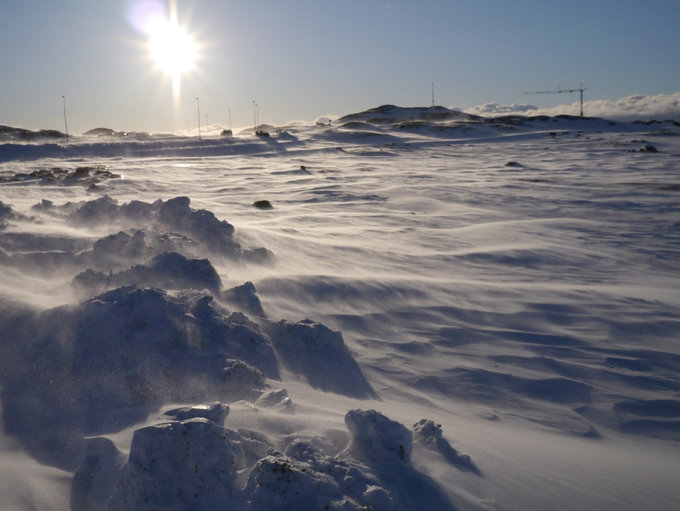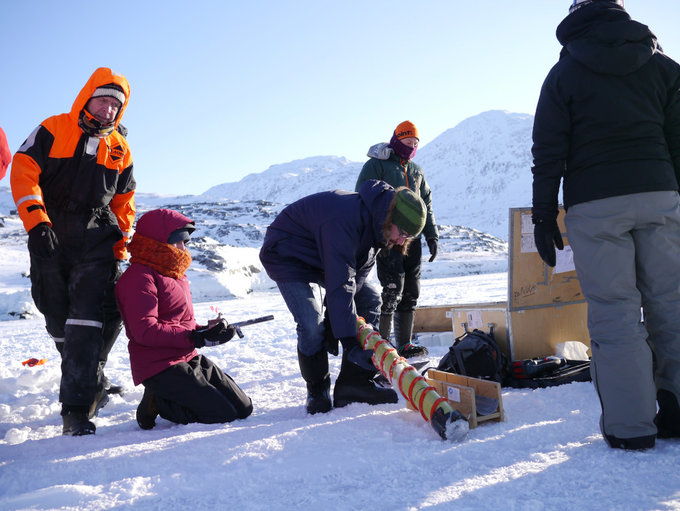Die Inhalte dieser Seite sind leider nicht auf Deutsch verfügbar.
Seitenpfad:
- ArcTrain
- Training reports
- 2015 ASP Field School "Snow Covered Sea Ice"
2015 ASP Field School "Snow Covered Sea Ice"
February 13 – 20, 2015, Nuuk, Greenland
Snow and Ice - for the fact that I spent the last year researching their behaviour, I actually did not know them very well. Sure, as a modeller I know some equations describing their behaviour and I have seen them from time to time in small patches in Bremen, but that was about it. Especially from my current perspective it is surprising how sparse my knowledge was of sea ice and I do not even do any winter sports. Luckily for me in February I had the possibility to change this and get a first impression, what hides behind the word.

The Arctic Science Partnership is a research cooperation between Universities and Research Institutes from Greenland, Denmark and Canada. They aim for a better understanding of the current change in the Arctic with respect to all areas affected by it, and they offer their training not only to their members, but also to interested students from all over the world. This year their annual Field School took place in Greenland, covering the topic of sea ice together with its snow cover and aided by the funding of ArcTrain I was one of the lucky participants. The course itself was very well designed.
With only one week of time and the goal of giving an overview over all topics related to the research on snow covered sea ice, we had only very little time for each topic, yet the lectures managed to give me the impression of having learned really much about their different aspects. They covered not only the geophysical aspects of sea ice, its dynamics, its thermodynamics and the important role of snow in this context together with the different measurement techniques. No, they also spanned the Biology in this habitat, ranging from smallest ice algae over the shoals of fish relevant for fishing in Greenland to the large marine mammals like seals and polar bears.
On top of that there were highly interesting talks about the socio-cultural aspect of sea ice for the people living in Greenland, for their food, their choice of settlement and the huge amount of information that is present in the local communities. Additionally there was the practical side: We had a scavenger hunt teaching the use of GPS Navigation in snow fields, a field day on the sea ice where we learned to drill and prepare ice cores and a lab day of measuring different properties of the snow and ice samples we took before. Also we were in close contact to the people working in the Greenlandic Institute of Natural Resources, getting to know them, their culture and their very tasty food!

And finally we had enough time to get to know each other and the surroundings. Being a group of about 25 people from different continents with at least one shared interest, but also enough differences provided many nice conversations (next time you meet a Canadian, ask what they think of being a firefighter with the age of 8). And even if Nuuk is a small city that provides all the amenities I am used to, it is nevertheless situated on the coast of Greenland, and gave many opportunities for exploration. So if anyone has the possibility to take part in the next ASP Field School: I can only highly recommend it !
Mischa Ungermann
Mischa Ungermann


